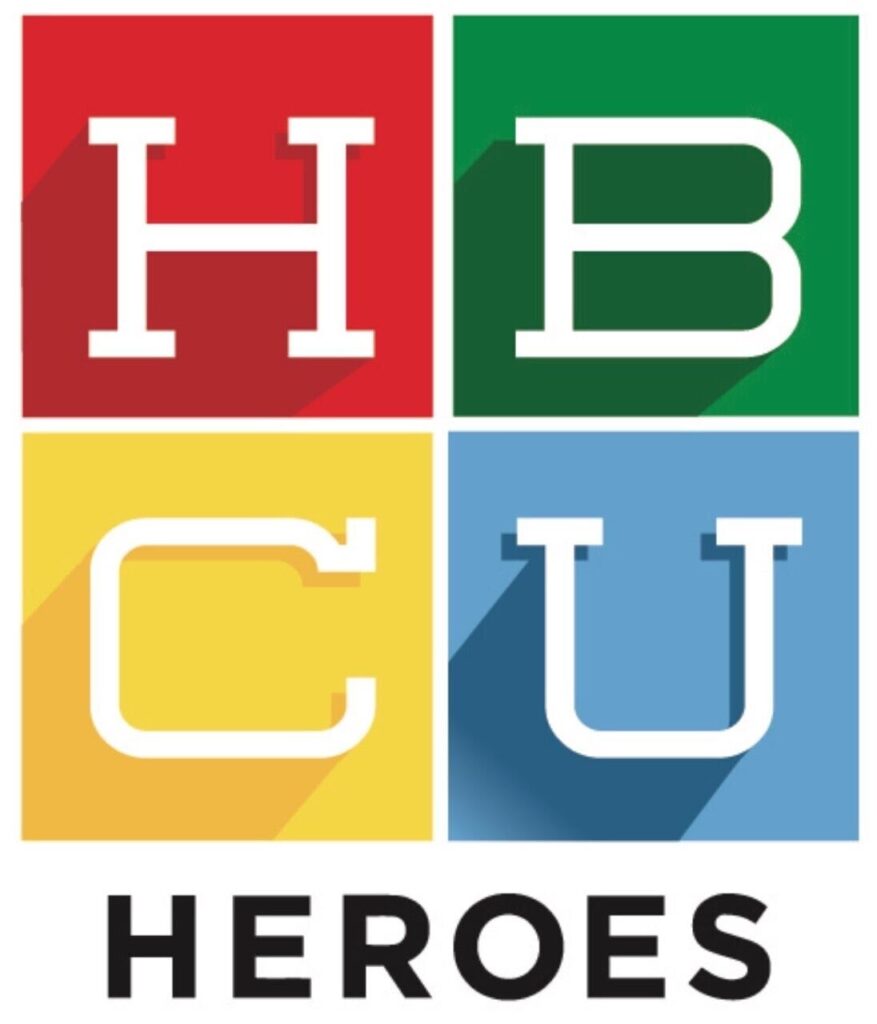Supporting HBCU Students: Overcoming Financial Barriers

Written By Tracey Pennywell HBCUs have a rich history of fostering Black leaders, entrepreneurs, and innovators. They represent only 3% of U.S. colleges, but they produce almost 20% of all Black graduates. Despite their significance, HBCU students often face significant financial obstacles that can hinder their academic journeys. The digital divide also poses a significant challenge for HBCU students. HBCU Heroes is committed to bridging this gap and empowering HBCU students. The organization aims to raise $5 million by December 31, 2025, to provide scholarships, computers, and essential support to these students. This funding will help address various financial burdens, including: A 2020 survey by the Hope Center for College, Community, and Justice, which surveyed nearly 5,000 students from 14 HBCUs, highlights the severity of these challenges. These statistics underscore the urgency of supporting HBCU students. By investing in their education and well-being, we invest in the future of our nation. To learn more about HBCU Heroes and how to contribute, please visit www.hbcuheroes.org. All donations are tax-deductible. Tracey Pennywell
A Thanksgiving Call to Action: Level the Playing Field for HBCU Students

Written By Tracey Pennywell As Thanksgiving rolls around, it’s a time for reflection, gratitude, and giving back. While we’re all enjoying the comfort of good food and family, it’s important to remember that many HBCU students are facing challenges that make their academic paths much harder than they should be. Historically Black Colleges and Universities (HBCUs) are powerhouses of Black excellence, producing leaders, innovators, and changemakers. But despite their immense contributions, the financial hurdles many students face are staggering. – Over 70% of HBCU students rely on financial aid or scholarships just to stay in school. – More than 50% of these students are first-generation college attendees, navigating uncharted territory for their families. – Even more concerning, 50% face food insecurity and 55% struggle to afford safe housing. Picture this: the cost of your Thanksgiving dinner may be equivalent to the price of a textbook. Textbook costs have skyrocketed by 88% over the last decade, and even with financial aid, students are left with a $4,000 to $8,000 financial gap every year. That’s where HBCU Heroes steps in. We’re working to close that gap by raising $5 million by December 31, 2025, to provide scholarships, technology, and emergency funds for HBCU students in need. This holiday season, let’s be thankful—and let’s give back. Your support can ensure that students have the resources they need to succeed academically without worrying about food, housing, or technology. These are the future leaders of our communities, and they need us now. Join HBCU Heroes in making a difference. Let’s serve up an opportunity this Thanksgiving. Thank you for your continued support, HBCU Heroes Tracey Pennywell
Why Corporate America Needs More HBCU Talent—And How Companies Can Step Up

Written By Tracey Pennywell Corporate America is missing out. HBCUs produce top-tier talent—future leaders in tech, business, healthcare, and beyond—yet many companies still overlook these graduates. The result? A missed opportunity for stronger teams, fresh perspectives, and a more innovative workforce. Companies that embrace HBCU talent gain a competitive edge—access to skilled professionals, innovative thinkers, and future industry leaders. Here’s why hiring from HBCUs is a smart investment in long-term business success. HBCUs: A Pipeline of Skilled, Resilient, and Innovative Talent For over a century, HBCUs have developed remarkable individuals and trailblazers in every industry. Their graduates bring: Despite this, hiring biases, limited corporate connections, and fewer opportunities continue to block their path. The responsibility to change this falls on corporate leaders. Systemic Barriers Holding HBCU Graduates Back HBCU talent isn’t lacking—access is. Key barriers include: Breaking these barriers isn’t just about fairness—it’s about tapping into a powerhouse of untapped talent. How Companies Can Step Up and Invest in HBCU Talent Companies that prioritize diversity outperform their competitors, drive innovation, and create stronger workplace cultures. To bridge the opportunity gap, organizations must: 1. Strengthen HBCU Recruitment & Partnerships 2. Implement Bias-Free Hiring 3. Invest in Mentorship & Career Development 4. Provide Scholarships & Financial Support HBCU Heroes: The Bridge to Diverse Talent HBCU Heroes connects HBCU students with top employers, mentors, and career opportunities. Through strategic partnerships and hands-on support, we help businesses find, develop, and retain high-performing HBCU talent. By partnering with HBCU Heroes, companies can: The Future of Corporate America is HBCU Strong The numbers don’t lie—companies that hire HBCU graduates build stronger, more innovative teams. But this isn’t just about checking a diversity box. It’s about bringing in driven, resilient professionals who can lead, problem-solve, and push businesses forward. The talent is there. The question is—will your company tap into it or miss out? Let’s make real change happen. Partner with HBCU Heroes and start building a workforce that reflects the future of corporate success. Browse our website to learn more about how you can gain this competitive advantage and the next steps you’ll take in this unique journey towards success. Tracey Pennywell
5 Power Moves HBCU Students Can Use To Shift From Campus to Career

Written By Tracey Pennywell By Tracey Pennywell Talent opens doors, but networking, personal branding, and resilience unlock opportunities. Whether you’re aiming for tech, entertainment, entrepreneurship, or corporate leadership, your ability to build connections, own your story, and turn challenges into growth will set you apart. Here’s how to leverage your HBCU advantage and secure the future you deserve. Here’s how you can make the most of your HBCU experience to secure the opportunities you deserve. 1. Your Network is Your Net Worth Your next big break might come from a conversation, not a job board. Networking for HBCU students is about leveraging alumni connections, mentorship programs, and digital networking spaces to open doors. Many top companies are looking to increase diversity in leadership—but you have to be visible to be considered. Action Step: 2. Build Your Personal Brand—Your Career Depends on It In today’s digital-first world, your online presence is your résumé. Employers and recruiters search LinkedIn, social media, and online portfolios before making hiring decisions. The question is: What does your online presence say about you? HBCU students and graduates have a distinct advantage—your education and experiences already set you apart. Now, it’s time to showcase that to the world. Action Step: Need help crafting a professional résumé that stands out? Download our free HBCU Résumé Template to highlight your skills and experiences effectively! 3. Turn Pressure into Power Systemic barriers exist, but they don’t define you. Black professionals in competitive industries know that resilience is a skill as much as a mindset. Every challenge—whether financial struggles, lack of corporate connections, or industry gatekeeping—can be turned into an opportunity. HBCU alumni success stories prove that those who push forward with mentorship, skill-building, and strategic career moves are the ones who thrive. Action Step: 4. Start Small, Scale Gradually You don’t have to land your dream job overnight. HBCU students looking for internships and job placements should focus on building skills, gaining real-world experience, and strategically positioning themselves for future success. Action Step: 5. Your HBCU Experience is Your Competitive Advantage Your education isn’t just a degree—it’s a powerful differentiator. The community, leadership, and cultural grounding that HBCUs provide create a resilient, innovative, and ambitious generation of professionals. Use it to your advantage. Action Steps: Claim Your Future Now Every move you make today—from networking and skill-building to mentorship and personal branding—builds the foundation for your long-term success. HBCU Heroes and our partners are here to ensure you have the tools, resources, and connections to not just enter competitive fields, but to lead in them. Explore career mentorship, internships, and digital networking opportunities to take your next step forward. Your HBCU journey is just the beginning—now, it’s time to turn your potential into power. Next Steps For You To Take Your HBCU experience is a powerful launchpad. Build your network, refine your brand, embrace challenges, and leverage every opportunity to stand out. With the right mindset and resources, you’re ready to break barriers and lead in any industry. Want to learn more? Browse our website to explore mentorship, internships, and career resources designed to help you succeed. 🚀 Tracey Pennywell
How Diverse Leadership Teams Spark Innovation and Drive Growth

Written By Tracey Pennywell Great ideas don’t come from echo chambers. They come from teams who see problems differently, ask better questions, and build with more people in mind. That’s why companies with diverse leadership outperform the rest — not by chance, but by design. At HBCU Heroes, we see firsthand how giving underrepresented talent a seat at the table transforms not just careers — but companies. Diverse leadership is more than a feel-good metric. It’s a growth strategy. The Numbers Make It Clear Let’s talk facts: The pattern is consistent: the more inclusive your leadership, the better your business outcomes. Why It Works: Diverse Thinking = Better Problem-Solving When your leadership team shares the same background, you often get the same ideas recycled. But bring in people with different lived experiences — and suddenly, you unlock new ways to solve problems, serve customers, and stay ahead of change. Diverse leadership doesn’t just improve your internal culture. It helps you: Innovation doesn’t happen in isolation. It happens when decision-makers reflect the world outside their boardroom. Real Examples, Real Impact Here’s what it looks like in practice: These companies didn’t just check a box. They built cultures where diverse perspectives shape real business decisions. What You Can Do Now: 5 Actions That Make a Difference Want to see results like this in your organization? Start with these five moves: 1. Check Your Leadership Gaps Look at your executive and management teams. Who’s missing from the table? Do your decision-makers reflect your customers or the talent you want to attract? 2. Invest in Sponsorship, Not Just Mentorship Mentorship offers advice. Sponsorship changes careers. Create programs that connect underrepresented talent with senior leaders who can open doors, not just offer guidance. 3. Build Your Talent Bench Early Partner with HBCU Heroes to sponsor scholarships and leadership training for high-potential students. Companies that grow their own talent pipelines win long-term. 4. Rethink How You Promote Leadership potential doesn’t always show up in a traditional résumé. Review how you assess readiness and update your promotion process to prioritize impact, not just pedigree. 5. Tie Inclusive Leadership to Innovation Goals Track it like any other performance metric. If innovation is the goal, make sure diverse leadership is part of the playbook — and the measurement. Why It Matters for Business (and the Bigger Picture) This isn’t just about doing the right thing — it’s about making smart, future-focused decisions. When your leadership team reflects different communities, you create products that actually meet people where they are. You build loyalty. You move faster. You grow smarter. At HBCU Heroes, we help companies turn that belief into action. Whether you want to hire more intentionally, build leadership pipelines, or sponsor students who will shape the future — we’re ready to partner with you. Want to Move from Talk to Action? Let’s Build Together Here are a few ways to start: 🔹 Fund a leadership development program for rising HBCU talent🔹 Host a mentorship session with your executive team🔹 Sponsor a paid internship that leads to real job offers🔹 Partner with HBCU Heroes to build custom career pipelines 📩 Contact us today 💙 Or make an immediate impact — 👉 [Donate Now] to help us fund scholarships and career programs for the next generation of leaders. Better leadership starts with better access. Let’s open more doors — together. Tracey Pennywell
Why Diverse Teams Outperform: A Look at the Research

Written By Tracey Pennywell When companies bring together people from different backgrounds, they do more than check a box—they unlock better performance, stronger decision-making, and measurable growth. The research backs this up. But understanding why diverse teams outperform isn’t just about the data—it’s about how people with different perspectives solve problems, take risks, and build products that reflect real-world needs. Here’s a closer look at what the research says—and what companies can do to build teams that deliver stronger results. What the Research Tells Us Multiple studies point to the same conclusion: teams made up of individuals from a variety of life experiences perform better than homogenous groups. These numbers aren’t just statistics—they tell the story of what happens when you bring a broader set of perspectives to the table. You spot blind spots earlier, challenge assumptions more often, and tap into insights others might miss. Why Diverse Teams Actually Work Better The value of diverse teams goes beyond demographics. It’s about: In short, diversity helps teams think more critically and act more effectively. Actionable Steps to Build—and Support—High-Performing Diverse Teams Creating a high-performing team takes more than hiring from a range of backgrounds. You also have to support those team members and create space for everyone to lead. Here’s how: 1. Start with how you hire 2. Create real pathways to leadership 3. Listen to your team—and act on feedback 4. Make inclusion a team sport Innovation Doesn’t Come from Sameness If your teams all look the same, think the same, and come from the same places, you’re not just missing out on talent—you’re limiting your potential. The companies that are growing fastest, building smarter products, and solving real problems are the ones investing in diverse teams and creating cultures that value every voice. Ready to walk the walk? 👉 HBCU Heroes partners with forward-thinking companies to build pipelines of skilled, driven, and underrepresented talent. Let’s work together to strengthen your team—and your impact. Reach out today. 🎓 Fuel the Pipeline: Support the Next Generation Want to create more high-performing, diverse teams? Help us build the pipeline. Through our Dollars for Scholars Campaign, HBCU Heroes is raising $5 million to fund scholarships, paid internships, and career programs for underrepresented students. Many of these students face real barriers to finishing school and launching their careers—but your support can change that. 💙 Be the reason a student stays enrolled, earns their degree, and gets hired. 👉 [Donate to Dollars for Scholars Today] Tracey Pennywell
Onboarding for Impact: How to Support New Hires from Nontraditional Backgrounds

Written By Tracey Pennywell Hiring someone is only the beginning. If you bring in talent from nontraditional backgrounds—first-gen grads, career changers, community college transfers, or HBCU students—you need to go a step further. You need to support them. The early days at a new job set the tone for everything that follows. Done right, onboarding builds confidence, accelerates productivity, and fosters belonging. Done wrong—or overlooked entirely—it sends a message: you’re on your own. Here’s how companies can design onboarding experiences that help nontraditional hires feel prepared, valued, and set up to thrive. Why Onboarding Needs to Evolve A one-size-fits-all approach to onboarding doesn’t work—especially for employees coming from outside the “traditional” corporate mold. These hires often bring fresh insight, practical skills, and lived experience that can benefit your entire team. But if the culture, language, or unspoken rules of the workplace feel foreign, even top talent can struggle to find their footing. You don’t need to lower the bar. You just need to widen the ramp. What Nontraditional Talent Actually Needs Here’s what many early-career hires from underrepresented backgrounds are thinking—but rarely say out loud: You can remove these silent roadblocks by building intentional, inclusive onboarding that anticipates these moments—and answers them before they become issues. 5 Steps to Make Onboarding More Impactful 1. Make the unspoken rules… spoken. Explain how your team communicates, how decisions get made, and what success actually looks like. Normalize asking questions. Better yet—build time into the process for them. 📌 Action tip: Create a “Day One Playbook” with real talk—slack etiquette, how to schedule time with senior leaders, and tips from other team members who’ve been in their shoes. 2. Pair new hires with a peer guide. This isn’t about mentorship (yet). It’s about having someone they can Slack with when they’re unsure if something is worth a meeting or a quick message. Peer guides can offer clarity, encouragement, and perspective in those critical first weeks. 📌 Action tip: Rotate peer guides every 90 days so both sides build broader connections. 3. Clarify your expectations early and often. Don’t assume people “just know” how to show up. Set clear, role-specific goals and checkpoints. When people know what’s expected, they perform better and feel less imposter syndrome. 📌 Action tip: Replace vague goals like “take initiative” with specific outcomes like “identify one process to improve by week 6.” 4. Check in, not just check a box. Schedule real-time conversations that go beyond task updates. Ask: How’s onboarding really going? What’s still unclear? How are you feeling about your place on the team? 📌 Action tip: Assign managers a short onboarding checklist with intentional questions to help uncover barriers and build trust. You can use this one here. 5. Connect their work to real impact. When you show new hires how their role matters—from customer experience to company growth—you help them feel part of something bigger. That’s how you build loyalty early. 📌 Action tip: On Day One, introduce a story about a client win or company milestone that connects directly to the new hire’s function. It’s Not Just Onboarding—It’s Belonging If you want your team to reflect the world you serve, your onboarding needs to do more than introduce a tech stack and office protocols. It should signal that this place was built for them to grow—not just survive. 💙 Help Us Build the Pipeline At HBCU Heroes, we partner with companies to open doors for students and early-career talent from underrepresented backgrounds. But for many, the journey to the workforce is filled with barriers—tuition gaps, housing insecurity, and lack of access to mentorship. That’s why we launched the Dollars for Scholars Campaign, raising $5 million to fund scholarships, paid internships, and career-readiness programming for students who need it most. You can be the reason someone shows up ready—not overwhelmed—on their first day. 👉 [Donate today and help build the pipeline for tomorrow’s leaders.]
Why Representation at the Top Inspires Performance Across the Board

Written By Tracey Pennywell When leadership reflects the people it leads—something powerful happens. Trust builds. Engagement deepens. Teams push harder. That’s the impact of representation. It’s not just about doing the right thing—it’s about doing what works. Companies with leadership teams that include women, Black and Brown executives, and professionals from underrepresented communities consistently see stronger team morale, higher retention, and better business outcomes. And that’s not theory—it’s backed by research and felt in the day-to-day culture of high-performing companies. What Happens When People See Themselves at the Top Representation isn’t symbolic—it’s strategic. When your leadership includes voices with lived experiences that reflect your workforce and customer base, you unlock real advantages: When people believe their work is seen and valued, they show up differently—and that shift has ripple effects throughout the organization. It’s Not Just Internal—It Impacts Your Customers, Too Leadership representation influences how your brand is perceived externally. Today’s customers and clients are paying attention to who’s making decisions at the top. A leadership team that reflects a broader cross-section of society sends a clear message: your company sees, respects, and values different perspectives. That kind of trust leads to stronger customer loyalty—and opens doors to markets that traditional teams often miss. Actionable Ways to Build Representation with Intention If you’re serious about creating more representative leadership, here’s where to start: 1. Audit your leadership pipeline. Take a hard look at who’s getting promoted and who’s getting passed over. Are high-potential candidates from underrepresented backgrounds being mentored, sponsored, and supported into decision-making roles? 2. Fund internships and fellowships with long-term growth in mind. Start the leadership journey earlier. By supporting scholarships, internships, and career programs for HBCU students and other nontraditional talent pipelines, you’re planting seeds for tomorrow’s C-suite. 👉 Want to take action today? Contribute to HBCU Heroes’ Dollars for Scholars Campaign—a powerful way to invest in the next generation of diverse leadership. Every dollar funds scholarships, mentorship, and career pathways for high-potential students. Donate now. 3. Host visible, inclusive leadership opportunities. Invite leaders from underrepresented groups to speak at company town halls, lead high-visibility projects, or mentor across departments. Visibility matters—especially for those still figuring out if they belong. 4. Make space, don’t just “include.” Representation doesn’t mean fitting new people into old molds. It means rethinking systems so that new leadership styles, communication approaches, and cultural values are not just tolerated—but embraced and prioritized. The Bottom Line Representation at the top drives results at every level. It helps companies retain talent, unlock innovation, and connect with wider markets. But more importantly—it builds workplaces where people believe they can grow, lead, and thrive. And when people believe that? They give their best. Let’s stop treating representation like a side initiative. It’s a performance driver. A growth strategy. A reflection of the future workforce—and a better one. 🎓 Ready to be part of that future? Support HBCU Heroes’ Dollars for Scholars initiative and open more doors for high-potential students to rise, lead, and succeed. Give today. Tracey Pennywell
Leading Diverse Teams: What Managers Need to Know

Written By Tracey Pennywell Managing a diverse team isn’t just about filling a quota—it’s about creating an environment where everyone can bring their best selves to work. When you lead a team with diverse backgrounds, experiences, and perspectives, you’re setting the stage for creativity, innovation, and better decision-making. But to get there, you need to understand the nuances of what it takes to lead inclusively. Diversity, in its many forms—race, gender, experience, thought—presents both opportunities and challenges. As a manager, your job isn’t just to lead—it’s to create a space where every team member feels valued and empowered to contribute. And that’s where understanding the dynamics of a diverse team comes in. Why It Matters: The Power of Diverse Teams Research shows that diverse teams perform better. They make better decisions, innovate more, and adapt quicker. Diverse teams bring together different viewpoints that challenge assumptions and push for more effective solutions. When your team reflects a variety of backgrounds, you unlock the full potential of what’s possible. For leaders, that means fostering a culture of trust, respect, and open communication where differences are celebrated, not just tolerated. Diverse teams are only as effective as the environment they work in, and that starts with you—the manager. Key Principles for Leading Diverse Teams 1. Cultivate an Inclusive Culture The foundation of successful leadership in diverse teams is an inclusive culture. Inclusivity means more than just acknowledging differences—it means actively engaging with those differences in ways that encourage open dialogue and respect. Create spaces for team members to express their unique perspectives and experiences without fear of being dismissed. 2. Be Aware of Unconscious Bias Unconscious bias can subtly affect how you manage your team, from the feedback you give to the opportunities you create. Recognize that bias exists, even if it’s unintentional, and be proactive in addressing it. This means taking the time to be aware of your assumptions and ensuring your decisions are based on merit and potential, not preconceived notions. 3. Encourage Collaboration Across Differences Diverse teams often experience friction—this is normal. The key is to turn that friction into fuel for collaboration. Encourage your team members to work through differences constructively, respecting each other’s perspectives. This approach will result in stronger problem-solving and more innovative ideas. 4. Lead by Example As a manager, you set the tone for how diversity is valued in your team. If you demonstrate openness, respect, and humility, your team will follow suit. Lead by example in listening actively, acknowledging mistakes, and learning from diverse voices. This creates a ripple effect where team members feel empowered to bring their whole selves to work. 5. Provide Growth Opportunities for All Create pathways for all team members to grow and thrive, regardless of background or identity. Offer mentorship programs, skills development, and leadership opportunities that reflect the diverse makeup of your team. Make it clear that success isn’t limited to one demographic—every team member can rise if given the right support. Actionable Steps to Lead Effectively 1. Conduct Regular Feedback Loops Take time to check in with your team. Use surveys, one-on-one meetings, and team discussions to gauge how your leadership style is resonating with your diverse group. Are team members feeling heard and included? Are there barriers that prevent some voices from being fully engaged? 2. Invest in Training and Development Provide ongoing training on diversity, equity, and inclusion (DEI) principles for yourself and your team. This isn’t a one-time seminar—create a culture of continuous learning about how diversity impacts decision-making, communication, and collaboration. 3. Adjust Your Communication Style Not everyone communicates the same way. Some team members may be more direct, while others prefer a more diplomatic approach. As a manager, adapt your communication style to suit the needs of your team while maintaining clarity. This will foster a more inclusive environment where everyone feels comfortable sharing their ideas. 4. Build Cross-Cultural Competency Encourage team members to learn about and respect each other’s cultural backgrounds. This can be as simple as celebrating diverse holidays or learning about each other’s traditions. The more team members understand one another, the better they can work together. Empowering Diverse Teams for Success The key to successfully leading diverse teams is recognizing that diversity isn’t just a “nice to have”—it’s a powerful force that drives innovation, problem-solving, and performance. When you create an environment where every voice is valued, you unlock the potential of the entire team. That means better outcomes for your business, a more engaged workforce, and stronger relationships with your customers. As a manager, you play a crucial role in making diversity work. By being intentional about inclusion, providing equal growth opportunities, and leading by example, you can ensure that your diverse team doesn’t just survive—but thrives. Ready to Invest in the Future of Diverse Leadership? HBCU Heroes’ Dollars for Scholars campaign helps fund scholarships, mentorship, and career development programs for high-potential students from underrepresented backgrounds. You can make a tangible impact on the leadership pipeline by supporting this initiative. Every contribution helps build the next generation of diverse leaders. Donate today. Let’s ensure diverse teams have the leaders they need to succeed. Tracey Pennywell
Why Inclusive Job Descriptions Lead to Better Hires (and How to Write Them)

Written By Tracey Pennywell Creating inclusive job descriptions isn’t just a checkbox for your recruitment strategy; it’s one of the most effective ways to tap into the diverse talent coming out of Historically Black Colleges and Universities (HBCUs). These institutions produce some of the brightest, most capable individuals who are often overlooked by traditional hiring practices. Crafting job descriptions that speak directly to them can unlock a talent pool that’s both untapped and incredibly valuable. When you rethink how you write job descriptions, you’re not just adjusting your recruitment process; you’re sending a message to potential candidates that you value their unique experiences and perspectives. And that message matters more than you think. Why Inclusive Job Descriptions Matter The HBCU community is full of students who are equipped with skills that transcend the conventional educational paths many companies expect. But too often, these students face barriers in applying for jobs because job descriptions were written with a narrow scope. Inclusive job descriptions help break down those barriers and attract a broader, more diverse range of candidates. How to Write Inclusive Job Descriptions for HBCU Talent Now that we’ve seen why inclusive job descriptions matter, let’s take a look at how you can write them to attract HBCU talent. Here are practical steps to ensure your job descriptions reflect the values of inclusion while tapping into the strengths of this underrepresented talent pool. 1. Use Clear, Inclusive Language The words you use in your job description matter. Instead of using industry-specific jargon or overly technical terms that might intimidate applicants, aim for straightforward, accessible language. Avoid gendered words like “salesman” or “guru,” which can unintentionally alienate candidates. Use terms like “sales professional” or “strategic thinker” instead. Example: 2. Highlight Skills Over Formal Qualifications HBCU students bring a wealth of real-world experience, often developed through internships, leadership roles in student organizations, and active community involvement. Instead of focusing solely on educational qualifications, emphasize the specific skills you’re looking for—whether that’s communication, problem-solving, or teamwork. This approach invites individuals from diverse backgrounds to apply. Example: 3. Describe Your Company’s Commitment to Diversity Don’t just say you’re inclusive—show it. HBCU graduates want to know that your company is genuinely invested in creating an inclusive environment. Be upfront about your commitment to diversity and highlight initiatives you have in place to ensure all employees can thrive. This can help candidates feel confident that they will be supported throughout their career at your company. Example: 4. Focus on Potential, Not Just Experience Many students from HBCUs have not yet had the chance to follow the same traditional career path as other candidates, but they have the potential to thrive with the right guidance and support. Instead of requiring years of experience or a very specific background, focus on the qualities that would make someone successful in the role and the company. Example: 5. Encourage All Applicants to Apply A common issue with job descriptions is that they sometimes intimidate applicants, especially those from nontraditional backgrounds. Make sure you encourage candidates to apply even if they don’t meet every single requirement. This shows HBCU talent that you are more interested in their potential and willingness to grow than in checking off a list of qualifications. Example: 6. Offer Flexibility and Work-Life Balance Students from HBCUs often have diverse responsibilities outside of their academic careers, whether it’s supporting family, working part-time jobs, or participating in community service. Offering flexibility, such as remote work options or flexible hours, can be a strong selling point for these candidates. Example: Inclusive job descriptions are one of the most powerful tools you have for tapping into a rich and diverse talent pool, especially from HBCUs. By focusing on skills, offering flexibility, and emphasizing your company’s commitment to diversity, you’re not just opening the door for diverse candidates—you’re signaling that you understand the importance of diverse perspectives in driving business success. At HBCU Heroes, we’re committed to creating opportunities for HBCU students by providing scholarships, internships, and workforce development programs. Your support makes all the difference. 👉 Donate to the Dollars for Scholars campaign today and help us ensure that all talented students—regardless of their background—have the chance to succeed. Tracey Pennywell
